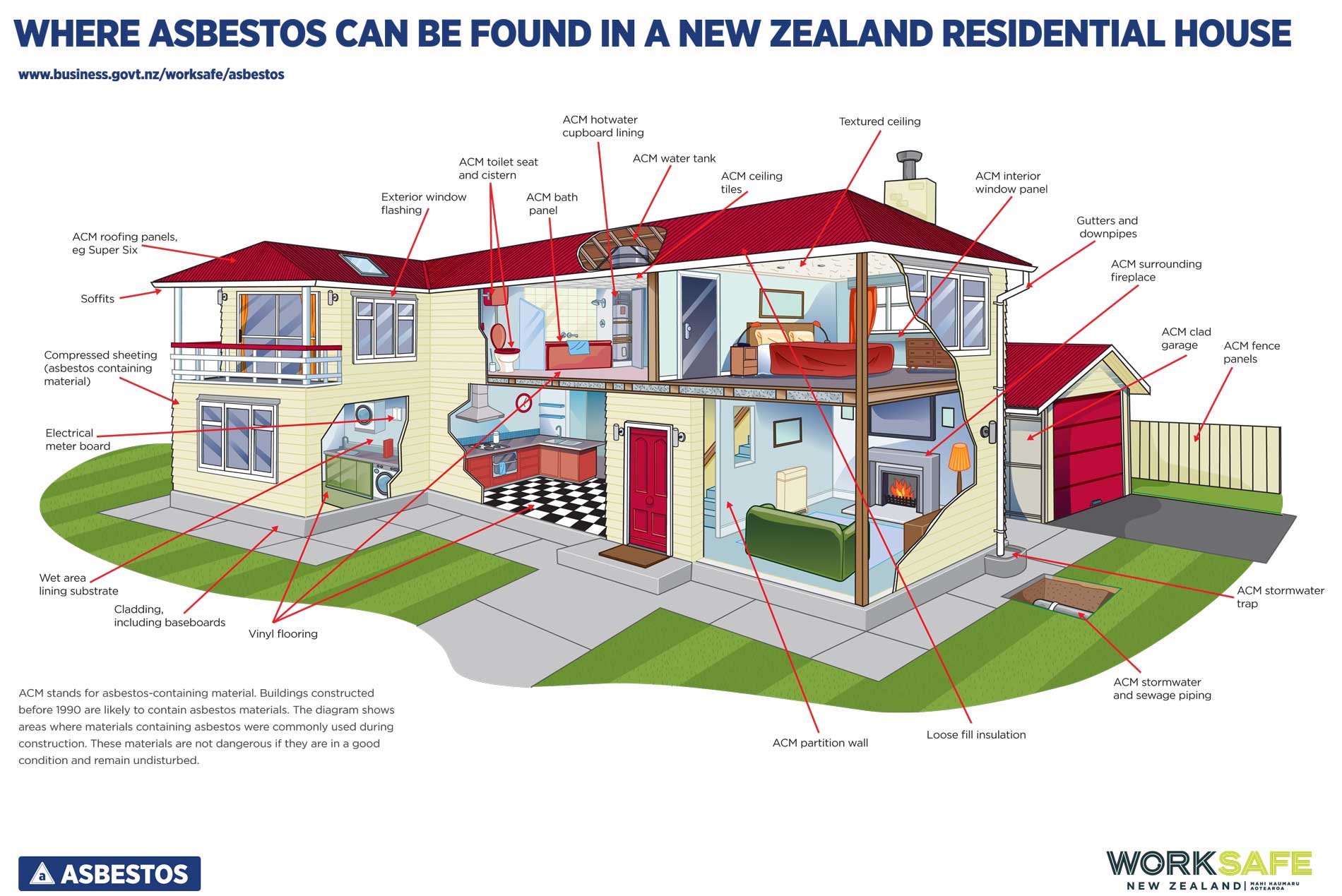Asbestos Management Plans
Don compiles Asbestos Management Plans for residential and smaller scale commercial properties. He was the Quality and Environmental Manager for the Building Research Association of New Zealand for 11 years (until 2015) and has the International proficiency certificate in IP 402 Surveying and sampling strategies for asbestos in Buildings. Don uses an IANZ accredited lab to test his samples for the presence of asbestos and his verification documentation outlines his H&S manual, policy, training and experience, hazards and risk registers and his professional indemnity and public liability cover. This ensures that all reasonable steps are taken to protect the Health and Safety of people during sample collection.
The Health and Safety at Work (Asbestos) Regulations 2016 require PCBU’s (companies, sole traders, rental property owners etc) to have a written plan (an asbestos management plan) for the buildings at their workplace.
About Asbestos Management Plans
An asbestos management plan sets out where any identified asbestos or asbestos containing material (ACM) is in a building and how it will be managed.
As a general rule, if a building was built between the late 1940’s and the late 1970’s it is highly likely that it will have asbestos containing material.
Buildings constructed between the 1980s and late 1990s are likely to contain asbestos containing material and those constructed beyond the year 2000 are unlikely to contain asbestos containing material.
Asbestos Management Plans for residential rental properties
Asbestos management plans need to record the potential of asbestos containing material to release asbestos fibres and Don uses an internationally recognised algorithm to assess the potential. The algorithm provides numeric values for a number of variables, the first being the product type.
Loose fill insulation that contains asbestos scores high due to its ability to release fibres. Fortunately, loose fill insulation that contains asbestos is rare in New Zealand. Flooring tiles score low as their ability to release asbestos is small. Another measure is the extent of damage or deterioration to the ACM. Where asbestos material is in good condition and unlikely to be disturbed then it does not present a risk. However, materials in poor condition or disturbed or damaged score higher The final two measures for the potential for ACM’s to release asbestos is the surface treatment and the type of asbestos.
A low total score means that the ACM can be left as it is, as it as low risk. A slightly higher score and the treatment is encapsulation. This involves coating the material with a product that penetrates into and hardens the item.
A higher score and the option is enclosure, that is placing a sealed barrier between the material and the surrounding environment. For a high score then the material is to be removed by a licenced operator. Removing 10 m2 or less of non-friable (product that cannot easily be crumbled) asbestos does not require a licenced operator however. A tradesman experienced in handling materials containing asbestos can undertake the removal.
Fees for surveys
Standard single story residential dwelling up to 150m2 $450.00
Outbuildings other than a single car garage may be additional
Samples tested by an IANZ Accredited Lab – cost per sample $50.00
A standard house would expect to have up to 5 samples taken.
The cost of a standard sized single story residential dwelling with a single car garage and 5 samples would be $700.
A call out to obtain a single sample, submit it for testing and report back: $250.
All prices are exclusive of GST.
Separate rates for small scale commercial buildings and pre sale and purchase checks



